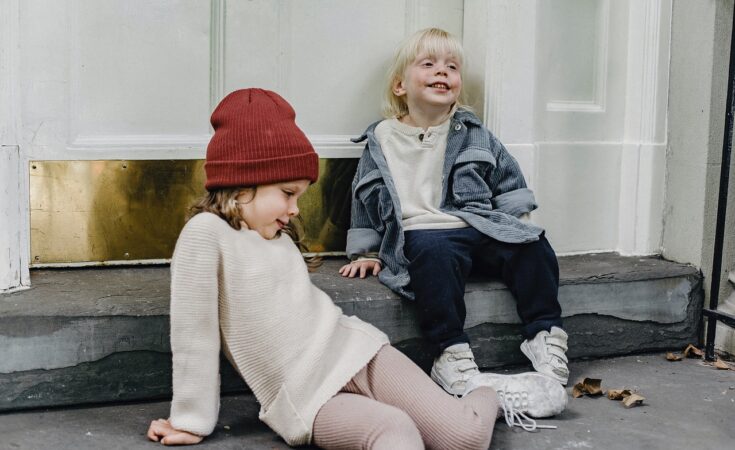When we become parents, we’re met with a flood of advice on how to raise happy, well-adjusted children. Amidst the various approaches, “positive parenting” and “warm parenting” stand out as two strategies that emphasize love, respect, and empathy. Although they might seem similar, they each carry unique philosophies and techniques. In this article, we’ll unpack the differences between positive and warm parenting, while also exploring the limits of the positive parenting approach.
What Is Positive Parenting?
Positive parenting is an approach rooted in the belief that children thrive when they feel secure, valued, and guided by respectful discipline rather than punishment. This method focuses on fostering a close parent-child bond by encouraging open communication, emotional validation, and constructive problem-solving.
Positive parenting techniques include:
- Using positive reinforcement to encourage desirable behavior
- Setting clear boundaries and expectations that children understand
- Encouraging independence while providing a safe space for growth
- Validating emotions without necessarily giving in to all demands
- Problem-solving together to find solutions to conflicts, rather than using punitive measures
The idea behind positive parenting is to teach children self-discipline and empathy by modeling these behaviors, rather than enforcing compliance through punishment.
In the past, I tended to favor this style of parenting with my children. However, recently, I’ve noticed some issues that might have been caused by it. One of these is that, until a few months ago, my children didn’t really grasp the concept of expenses and money. To them, money seemed to fall from the sky, and a cookie priced at €2.50 was “cheap.” Small purchases became a daily habit, which by the end of the month added up to a significant amount!I also noticed that by encouraging them too much, even the slightest constructive feedback would trigger a dramatic reaction—often with an emotional storm on the inside, quickly followed by an “act” on the outside! So, I’ve returned to a more structured yet warm style of parenting, where I spend a lot of time guiding them on everyday tasks: organizing their rooms, doing their laundry, practicing their music, completing homework, and so on. Once a week, we have a family meeting to discuss what’s going well and what could be improved. For example, this weekend, we’re having a meeting because I’ve been dealing with a herniated disc for a few months, which makes it difficult for me to bend forward. I’ve noticed that the kids often leave their things on the floor in their rooms, the living room, or the bathroom! Since I like to keep a tidy home, these are all chances for me to accidentally hurt my back again. Despite my reminders, this behavior persists. Hopefully, after a short meeting, everyone will be a bit clearer on what needs to change!
What Is Warm Parenting?
Warm parenting is a less structured approach that places emphasis on creating a nurturing, affectionate, and open environment. Warm parenting does not prescribe specific discipline techniques but rather focuses on the parent’s disposition and interactions with the child. Warm parenting can be best described as a consistently loving and affirming presence in a child’s life.
Characteristics of warm parenting include:
- Showing frequent affection through words, physical closeness, and gestures
- Responding empathetically to a child’s emotions, regardless of behavior
- Encouraging open communication without necessarily focusing on “teaching moments”
- Providing emotional support during difficult situations
Warm parenting is about establishing a bond based on consistent, unconditional love. It is less focused on structure and discipline and more centered around making the child feel emotionally safe and supported.
Key Differences Between Positive and Warm Parenting
Though both positive and warm parenting prioritize a child’s emotional well-being, they differ in their approaches to discipline and behavior management.
| Aspect | Positive Parenting | Warm Parenting |
|---|---|---|
| Discipline | Structured, relies on respectful discipline | Flexible, less emphasis on discipline |
| Behavioral Focus | Focuses on teaching self-regulation | Focuses on providing emotional warmth |
| Boundaries | Clearly defined | Flexible, adaptable based on situation |
| Affection | Demonstrated alongside boundary-setting | Consistently expressed, less conditional |
| Parental Role | Guide and coach | Emotional support and nurturer |
While positive parenting emphasizes teaching, structure, and collaboration with the child to resolve issues, warm parenting is more about offering unconditional acceptance and emotional stability, without as much emphasis on guiding behavior.
The Limits of Positive Parenting
Despite the many benefits, positive parenting does have its challenges. Here are some of the potential limitations:
- Complexity and Consistency
Positive parenting requires consistent effort and patience, which can be challenging in everyday life. Setting and maintaining firm yet respectful boundaries takes mental and emotional energy, especially during periods of stress. Parents can sometimes struggle with balancing firmness and empathy, resulting in inconsistency that may confuse children. - Children’s Reaction to Boundaries
While positive parenting encourages open dialogue and shared problem-solving, some children may repeatedly challenge boundaries, which can make parents feel ineffective. Children are individuals with unique personalities, and some may require stricter boundaries or respond better to a different approach. - Parental Burnout
Since positive parenting requires intense emotional engagement and a high degree of patience, parents may experience burnout, especially if they are shouldering most of the discipline. This can lead to frustration and exhaustion, potentially diminishing the parent-child connection. - Misinterpretation as Permissiveness
Positive parenting is sometimes mistaken for permissiveness, especially when parents avoid punishment in favor of gentle guidance. Some observers (or even co-parents) might perceive this approach as “too soft” or as lacking discipline. In reality, positive parenting advocates for a strong structure and clear boundaries; however, it can be challenging for parents to achieve the balance that makes this method effective.
Combining Positive and Warm Parenting for a Balanced Approach
While each approach has its strengths, integrating elements of both positive and warm parenting can create a balanced, adaptable style that benefits both the child and parent. Here’s how:
- Blend Structure with Warmth: Setting boundaries can coexist with an affectionate, nurturing approach. Establish clear rules, but communicate them in a warm, empathetic manner. Acknowledge your child’s feelings about rules while maintaining expectations.
- Use Affection as a Reinforcer: Show warmth and affection as reinforcement for positive behaviors, which allows children to associate positive actions with an emotionally rewarding experience.
- Prioritize Self-Care as a Parent: Positive parenting requires patience, and warm parenting requires consistent emotional availability. Taking care of your own mental health helps you stay engaged without becoming overwhelmed.
Final Thoughts
Both positive parenting and warm parenting bring invaluable elements to the parent-child relationship. Positive parenting provides a structure that helps children learn self-discipline and empathy, while warm parenting ensures they feel unconditionally loved and supported. Combining these approaches can yield a rich, balanced dynamic that teaches children respect, empathy, and self-assurance.
As with any parenting approach, flexibility and self-awareness are essential. It’s normal to adapt, combine strategies, and refine your methods over time. There’s no “one-size-fits-all” in parenting, and what works best is often a unique blend tailored to the specific needs and personalities of both parent and child.
Happy parenting!


































